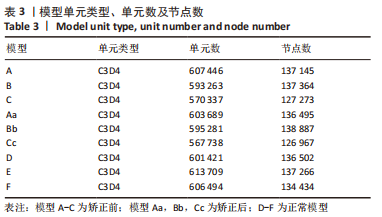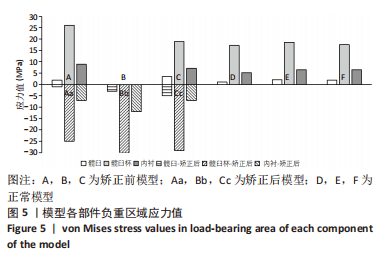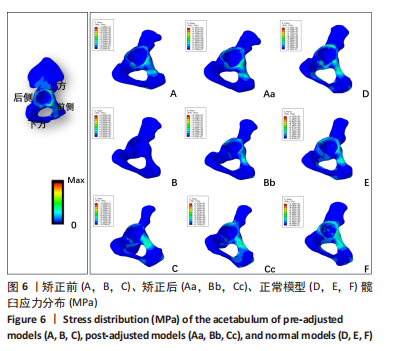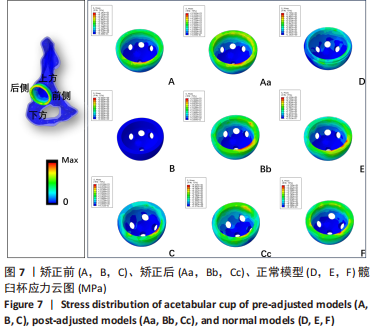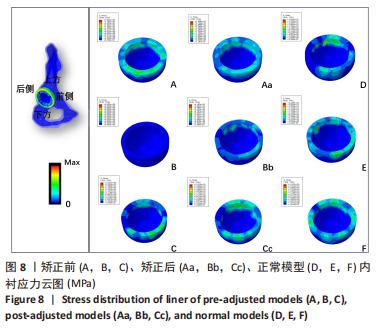[1] SCULCO PK, AUSTIN MS, LAVERNIA CJ, et al. Preventing leg length discrepancy and instability after total hip arthroplasty. Instr Course Lect. 2016;65:225-241.
[2] 刘嘉,邓江.髋臼假体定位准确性的研究进展[J].中国骨伤,2016,29(8):770-773.
[3] CALLANAN MC, JARRETT B, BRAGDON CR, et al. The John Charnley Award: risk factors for cup malposition: quality improvement through a joint registry at a tertiary hospital. Clin Orthop Relat Res. 2011;469:319-329.
[4] DIGIOIA AM, HAFEZ MA, JARAMAZ B, et al. Functional pelvic orientation measured from lateral standing and sitting radiographs. Clin Orthop Relat Res. 2006;453:272-276.
[5] 陈红,欧阳钢.补充和替代医学防治骨质疏松症的研究现状与展望[J].中国骨质疏松杂志,2014,20(11):1371-1374.
[6] 周一新,黄勇,何睿哲,等.人工全髋关节置换术治疗CroweⅣ型发育性髋关节发育不良的远期疗效[J].中国修复重建外科杂志,2021,35(12):1531-1536.
[7] IKE H, INABA Y, KOBAYASHI N, et al.Effects of rotational acetabular osteotomy on the mechanical stress within the hip joint in patients with developmental dysplasia of the hip: a subject specific finite element analysis. Bone Joint J. 2015; 97:492.497.
[8] 肖何,郑念野,代文立,等.髋臼假体前倾角的临床意义及其二维影像测量[J].中华关节外科杂志(电子版),2020,14(3):339-345.
[9] 严亮,王彭,汤春平,等.发育性髋关节发育不良髋臼旋转角对髋臼角度的影响研究[J].中国修复重建外科杂志,2017,31(6):647-652.
[10] 陈政伟.双极人工股骨头置换术治疗股骨颈骨折的效果[J].临床医学,2021, 41(12):43-45.
[11] 展影,雷新玮,屈瑾,等.不同股骨假体植入角度的髋关节表面置换术后股骨近端力学的有限元研究[J].国际医学放射学杂志,2010,33(5):451-455.
[12] 钱红波,刘浩,赵建宁,等.髋臼位相参数测量技术进展[J].实用骨科杂志, 2010,16(8):592-595.
[13] INABA Y, KOBAYASHI N, SUZUKI H, et al. Preoperative planning for implant placement with consideration of pelvic tilt in total hip arthroplasty: postoperative efficacy evaluation. BMC Musculoskelet Disord. 2016;17:280.
[14] ZHU J, WAN Z, DORR LD. Quantification of pelvic tilt in total hip arthroplasty. Clin Orthop Relat Res. 2010;468(2):571-575.
[15] SUZUKI H, INABA Y, KOBAYASHI N, et al. Positional and chronological change in pelvic tilt five years after total hip arthroplasty: A three-dimensional analysis. J Arthroplasty. 2016;31(1):317-322.
[16] ISHIDA T, INABA Y, KOBAYASHI N, et al. Changes in pelvic tilt following total hip arthroplasty. J Orthop Sci. 2011;16:682-688.
[17] 赖震,费骏,魏威,等.应用三维有限元分析髋臼骨结核软骨下骨塌陷的风险[J].生物医学工程学进展,2010,31(4):198-201.
[18] HUO MH, ZURAUSKAS A, ZATORSKA LE, et al. Cementless total hip replacement in patients with developmental dysplasia of the hip. J South Orthop Assoc. 1998; 7(3):171-179.
[19] 赖震.三维有限元分析在成人髋臼发育不良和全髋置换研究中的应用[D].苏州:苏州大学,2008.
[20] EZQUERRA L, QUILEZ MP, PÉREZ MÁ, et al. Range of Movement for Impingement and Dislocation Avoidance in Total Hip Replacement Predicted by Finite Element Model. J Med Biol Eng. 2017;37(1):26-34.
[21] 仲照明.全髋关节置换中股骨和假体的三维重建及有限元分析[D].长春:吉林大学,2012.
[22] 李苏皖,付国建,谢洋,等.骨质疏松患者全髋关节置换术后股骨应力变化的有限元分析 [J].中国矫形外科杂志,2017,25(3):260-263.
[23] SEAGRAVE KG, TROELSEN A, MALCHAU H, et al. Acetabular cup position and risk of dislocation in primary total hip arthroplasty. Acta Orthop. 2017;88(1):10-17.
[24] MALLEK A, MILOUDI A, KHALDI M, et al. Quasi-static analysis of hip cement spacers. J Mech Behav Biomed Mater. 2021;116:104334.
[25] FUJII M, NAKASHIMA Y, SATO T, et al. Acetabular tilt correlates acetabular version and coverage in hip dysplasia. Clin Orthop Relat Res. 2012;470:2827-2835.
[26] KANEMURA T, IMAGAMA S. Spino-pelvic alignment in an asymptomatic Japanese population: Mean and variance of upright thoracolumbar spino-pelvic alignment in Japanese. J Bone Joint Surg. 2009;28:558-567.
[27] CHANG JD, KIM IS, BHARDWAJ AM, et al. The Evolution of Computer-Assisted Total Hip Arthroplasty and Relevant Applications. Hip and Pelvis. 2017;29(1):1-14.
[28] 闫瑞忠,郭志坚,韩树峰.脊柱骨盆运动单位矢状位平衡与髋关节功能相关性的研究进展[J].中国骨与关节损伤杂志,2021,36(5):555-557.
[29] 孔刚,刘克贵,张树栋,等.骨盆体位性角度变化对全髋关节置换术中髋臼放置角度的影响[J].中华骨科杂志,2018,38(11):683-689.
[30] EZQUERRA L,QUILEZ MP, PÉREZ MÁ, et al. Range of movement for impingement and dislocation avoidance in total hip replacement predicted by finite element model. J Med Biol Eng. 2017;37:26-34.
[31] SHOJI T, YAMASAKI T, IZUMI S, et al. Factors affecting the potential for posterior bony impingement after total hip arthroplasty. Bone Joint J. 2017;99B:1140-1146.
[32] TEZUKA T, INABA Y, KOBAYASHI N, et al. Influence of Pelvic Tilt on Polyethylene Wear after Total Hip Arthroplasty. Biomed Res Int. 2015;2015:327217.
[33] MURPHY WS, YUN HH, HAYDEN B, et al. The Safe Zone Range for Cup Anteversion Is Narrower Than for Inclination in THA. Clin Orthop Relat Res.2018;476(2):325-335.
[34] 田润,雷雨田,王坤正,等.机器人辅助人工全髋关节置换术中及术后测量髋臼角度比较研究[J].中国修复重建外科杂志,2021,35(10):1246-1250.
|

